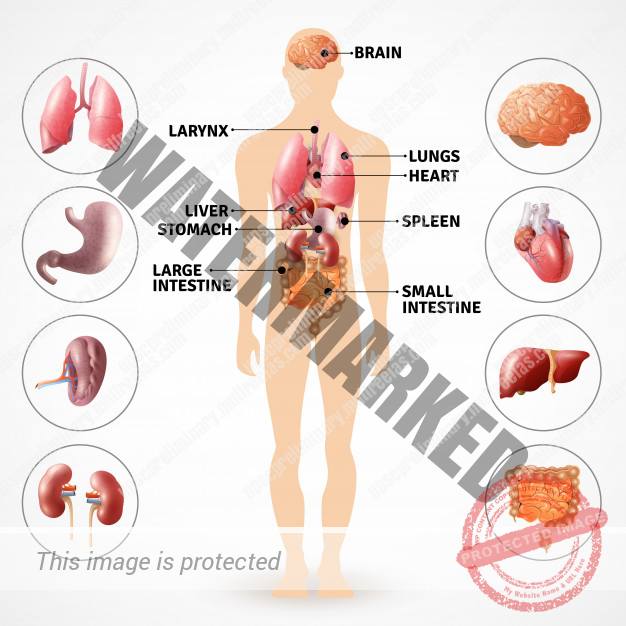- HUMAN ANATOMY
UNIT 13 – HUMAN BODY – PART 1
HUMAN BODY
If we were to “break apart” the human body at the microscopic level, then the cell would constitute the most basic unit of life.
The average adult has somewhere between 30 – 40 trillion cells and an estimated 242 billion new cells are produced every day. When a select group of cells with similar functions come together, it forms a tissue.
Tissues cumulate into organs, organ systems and eventually, an individual organism.
Cells -> Tissues -> Organs -> Organ System -> Organism
HUMAN ANATOMY
SKELETON
The human body exhibits a variety of movements from walking, bending and crawling to running, jumping and climbing. The framework that enables us to do all these activities is the skeleton. Humans have as much as 300 bones at birth. However, the bones start to fuse with age. At adulthood, the total number of bones is reduced to 206.
Human Anatomy is the scientific study of form and shapes of human beings
The skeleton also protects several vital organs such as the heart, lungs and the liver. Bones are attached to other bones through ligaments, a fibrous connective tissue.
Joints are points at which two bones meet. They enable a range of movements like rotation, abduction, adduction, protraction, retraction and more. Based on flexibility and mobility, joints can be further classified into movable joints and immovable joints. Movable joints are flexible while immovable joints (also called fixed joints) are non-flexible since the bones are fused.
MUSCLES
Muscles are specialised tissues which assist the bones in locomotion. Muscles are attached to the bones through tendons. Movement of limbs happens due to the contraction and relaxation of the corresponding muscles present in that region. Joints help in the flexibility of bones, but a bone cannot be bent or stretched until a muscle acts on it. In other words, the muscles attached to that bone pulls it to the direction of movement.
Furthermore, most movement involves muscles that work as a pair. For example, when we bend our arm, muscles in that region contract, become shorter and stiffer and pull the bones to the direction of movement. For relaxation (stretching), muscles in the opposite direction have to pull the bones towards it.

